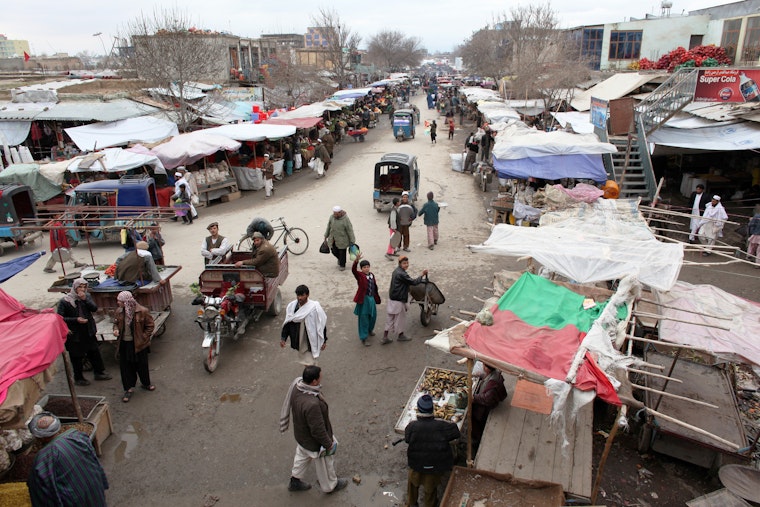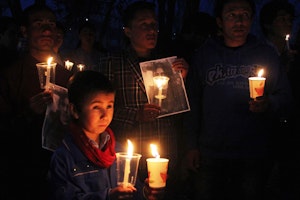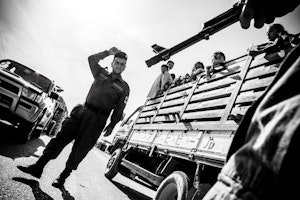Want to Enhance Border Security? Improve Human Security
By Shahrbanou Tadjbakhsh

On September 28, the Afghan Taliban, in what was described as its biggest victory in 15 years, seized control of the city of Kunduz, the country’s fifth-largest city. While the Afghan army was eventually able to regain control, the fall of Kunduz, however brief, was a cause for major concern not only in Afghanistan, but in Afghanistan’s neighbor to the north, Tajikistan.
The reason had to do with Kunduz’s location. The city lies a very short distance from the Panj River, which forms most of the roughly 810-mile border between Afghanistan and Tajikistan.
This border has received a lot of attention in recent years, mostly as a potential source of instability and insecurity. And there are real reasons for concern. Heroin—of which Afghanistan is a major supplier—regularly crosses this border in huge quantities en route to Russia and Europe. The recent events in Kunduz also evoked the specter of extremist fighters seeking to gain a foothold across the river.
These two concerns have informed many of the international community’s policies towards the border regions of the two countries, and over the past decade or so, vast sums have been invested to counter these threats, often in the form of support to border forces and counter-narcotics agencies.
All too often, however, the discourse around border security has neglected the human security needs of the communities living along the border, whose lives are directly affected by the actions of governments, international organizations, and criminal or insurgent groups of various stripes.
How do these communities assess the threats and opportunities of living close to borders? How do they see their needs and to what extent are these needs met by domestic or international actors? How do they relate to their kin on the other side of borders? What roles can they play in furthering cooperation between the two states and contributing to long-term stability and development?
In the early summer of 2014, two colleagues—Kosimsho Iskandarov of Tajikistan’s Academy of Sciences and Abdul Ahad Mohammadi of the Afghan Institute of Strategic Studies—and I decided to find out. As part of a joint project on security and human rights in Central Asia supported by the Stockholm International Peace Research Institute and the Open Society Foundations, our team visited five districts on the Tajik side of the border, and three—including Kunduz—on the Afghan side.
The study assessed how border populations living on both sides of the Amu Darya and Panj rivers in Afghanistan and Tajikistan viewed their human security needs, how they related to communities on opposite sides of the borders, and what roles they could play in reducing border tensions. We interviewed a wide spectrum of people, both men and women, from a variety of ethnic groups and all walks of life: government officials, the clergy, security and law enforcement, community leaders, farmers, drivers, construction workers, teachers, students, journalists, housewives, the unemployed, and pensioners.
Here’s what we found:
- While most people pointed to an increase in physical security and stability over the years, these gains were seen as easily reversible, and had not led to improved livelihoods. A lack of employment opportunities, poor access to education and health care services, inadequate regulation of vitally important water resources—all of these contributed to a sense of frustration at best and despair at worst. In short, the security of borders did not necessarily correspond to the human security of border communities.
- Communities living along the border often exist in a state of double isolation, both from their own countries and from each other. Infrastructure linking them to the relatively more economically developed center (especially in Afghanistan) is often lacking, and efforts by governments to impose strict controls on the border prevent easy access to communities on the other side. Although the past few years have seen the openings of new bridges, bazaars, and crossing points at several places along the border, in most cases, there is little to suggest that the local communities have benefitted much.
- Infrequent and limited cross-border contact has led to negative stereotyping and entrenched assumptions. This, in turn, contributes to mutual suspicion or, at best, apathy, and further undermines the potential for collaboration and mutual development.
Why should any of this matter? Simply put, when border communities are protected, provided for, and empowered, they can be positive agents for stability and cooperation. If, on the other hand, they remain isolated and neglected, they can become points of vulnerability that contribute to border insecurity.
What is needed is a model of border security that goes beyond traditional physical security measures to focus equally on developing secure and prosperous communities across borders. Such a model would have two key components.
First, border communities should be directly involved in the selection of development priorities. Local communities need to be empowered to allow for their greater participation in local governance. People need to be given economic and social opportunities that would provide real alternatives to illegal activities, and prevent potentially destabilizing manifestations of discontent.
Second, more and better cooperation between communities across borders will increase mutual trust and confidence. Investing in joint projects—around sharing of water resources, for instance—will also help alleviate environmental and economic insecurity. And more investments in border markets—including easier access, simplified procedures for the movement of people and goods, and improved infrastructure—can help these markets fulfill their potential.
The recent events in Kunduz show the need for a comprehensive approach to security, one that does not privilege state security over human security, especially in a potentially dangerous and vulnerable region. Addressing human security needs now can help prevent grave consequences in the future.
Shahrbanou Tadjbakhsh is a research associate at the Peace Research Institute Oslo.

